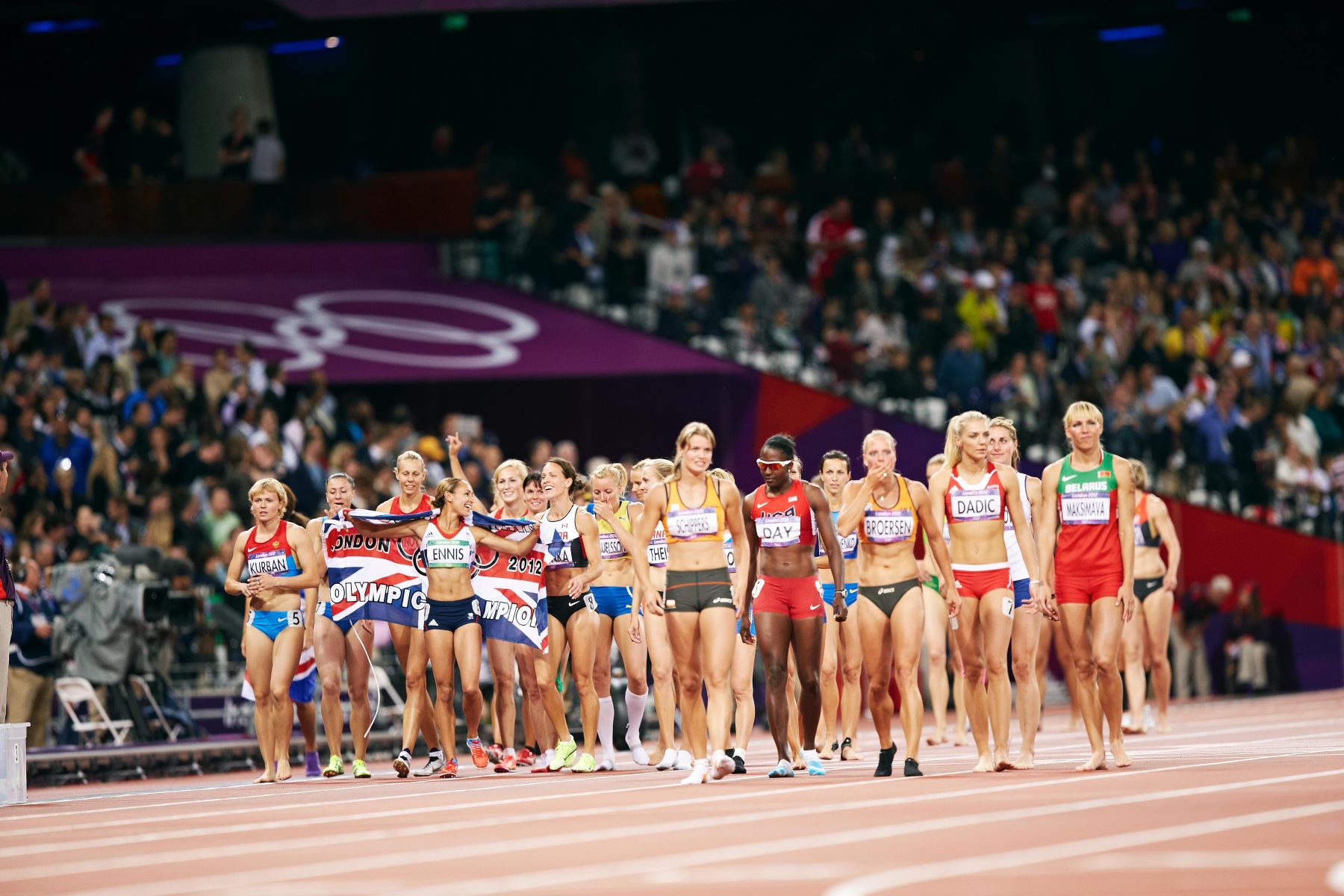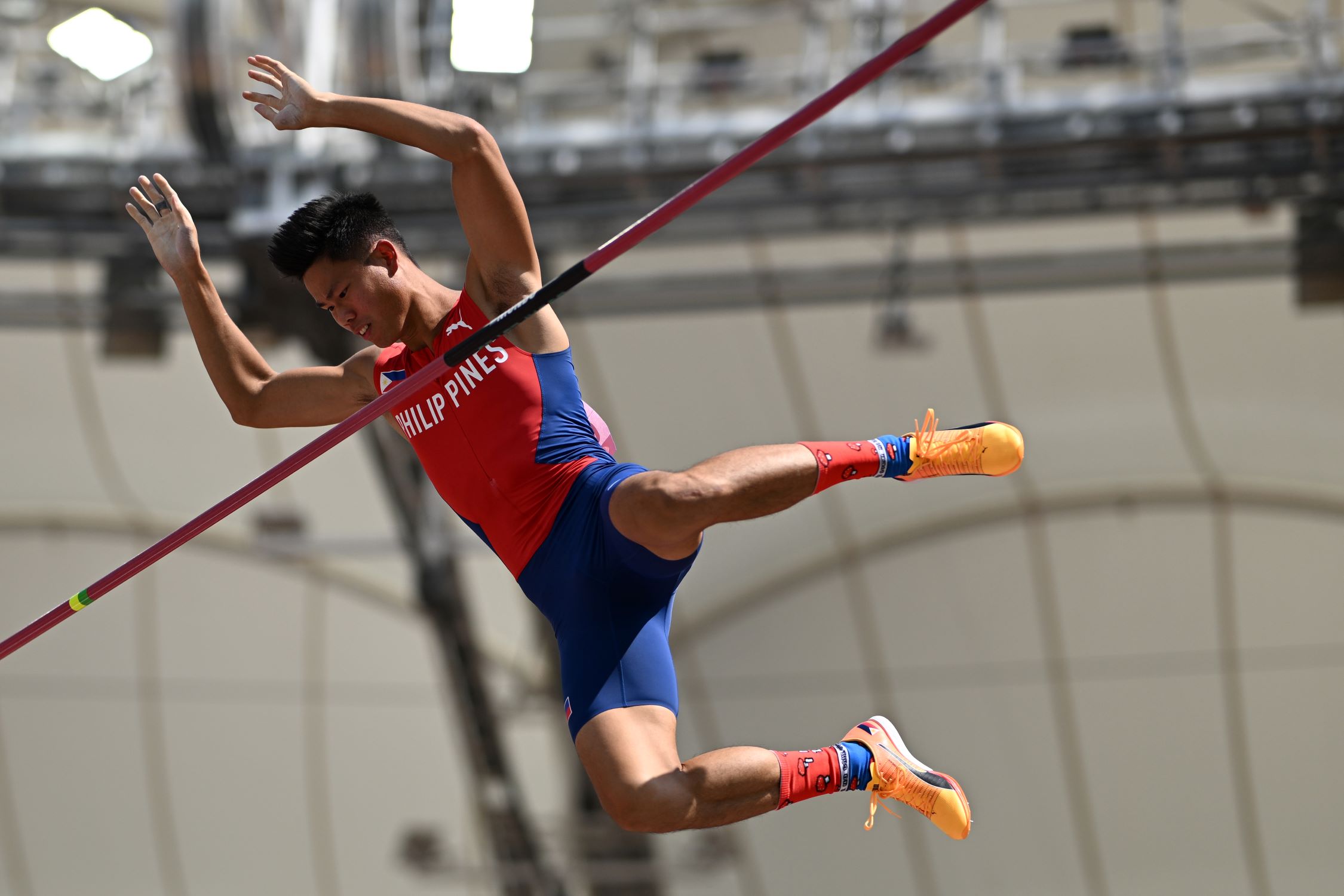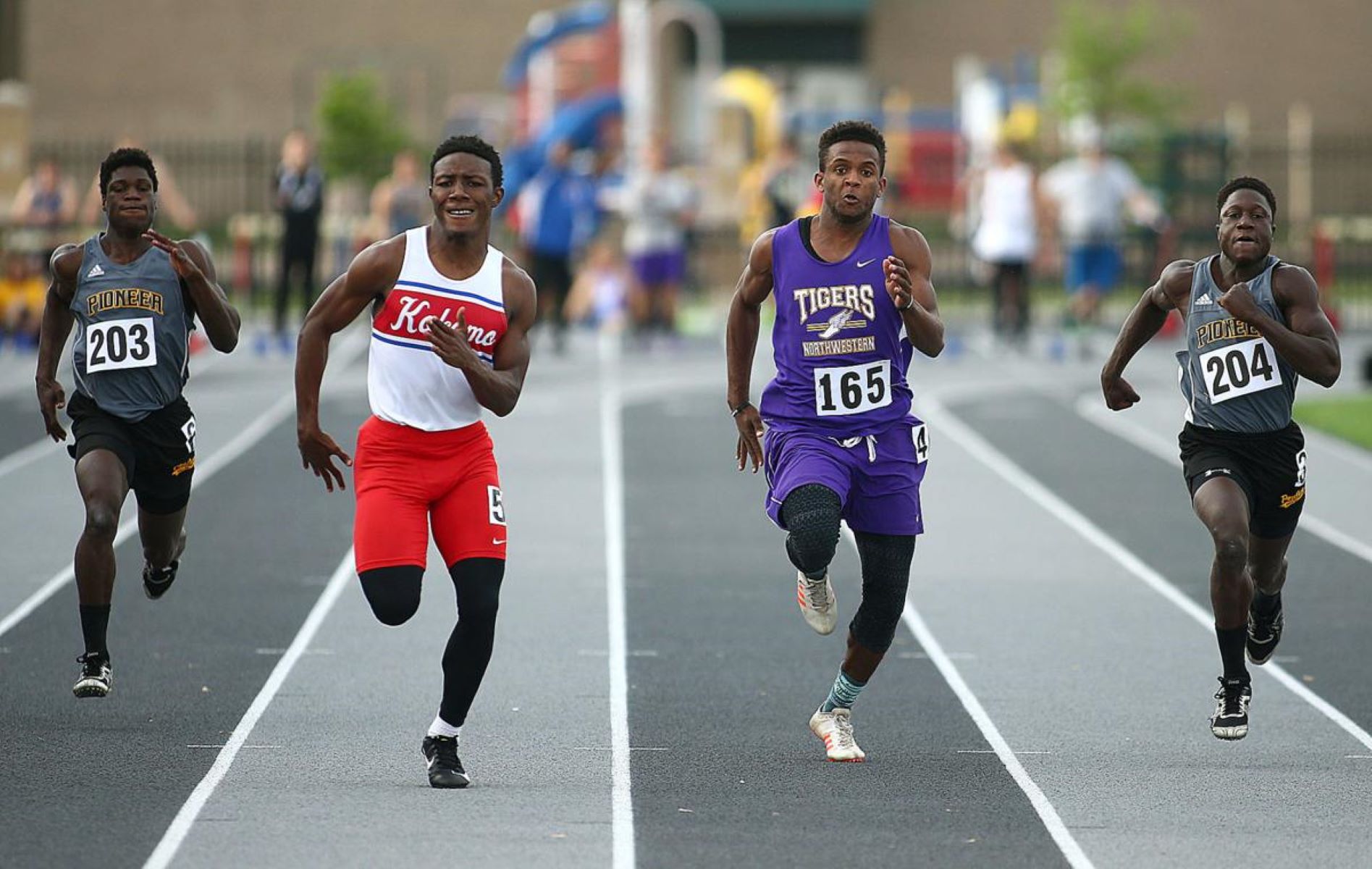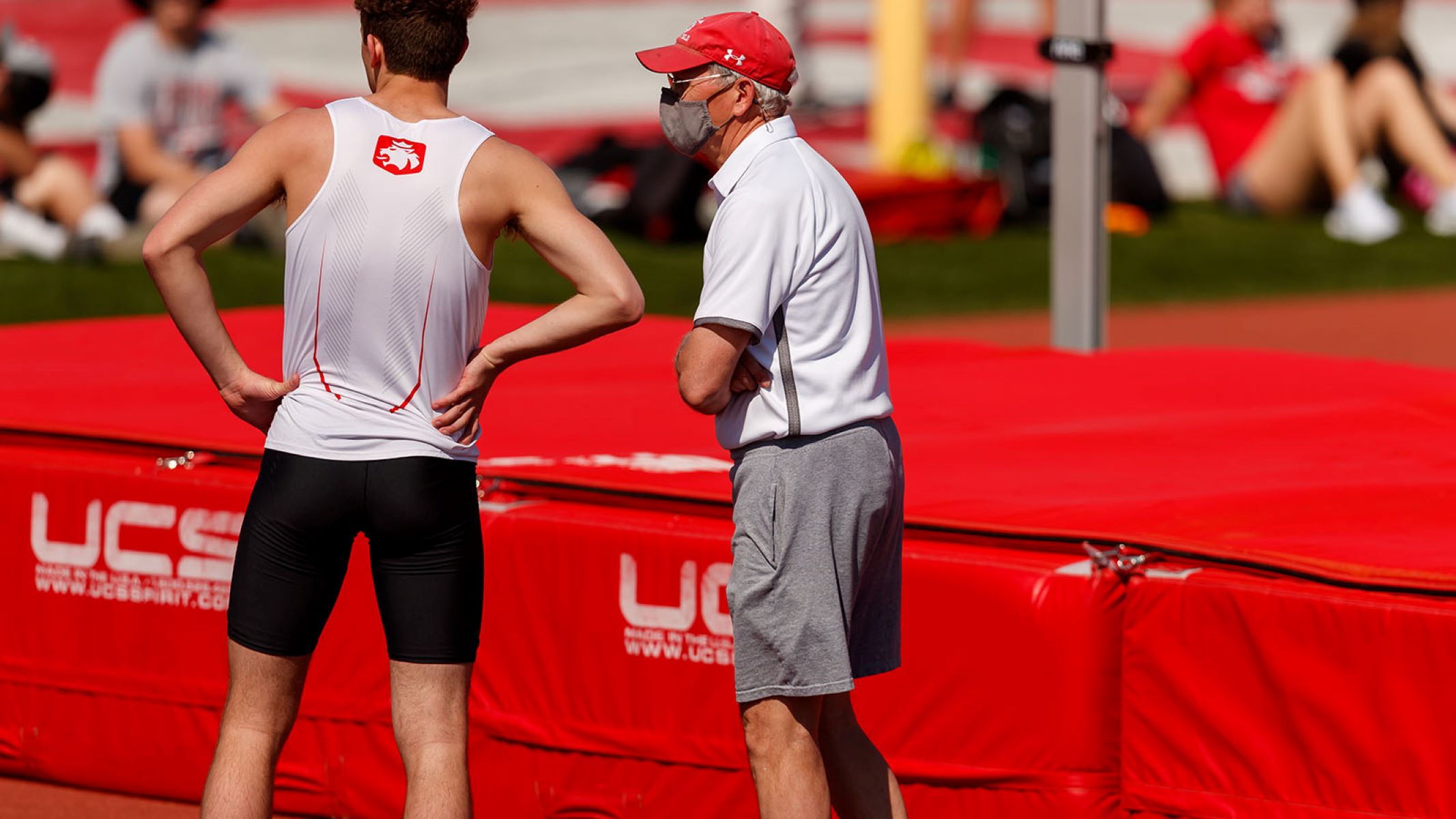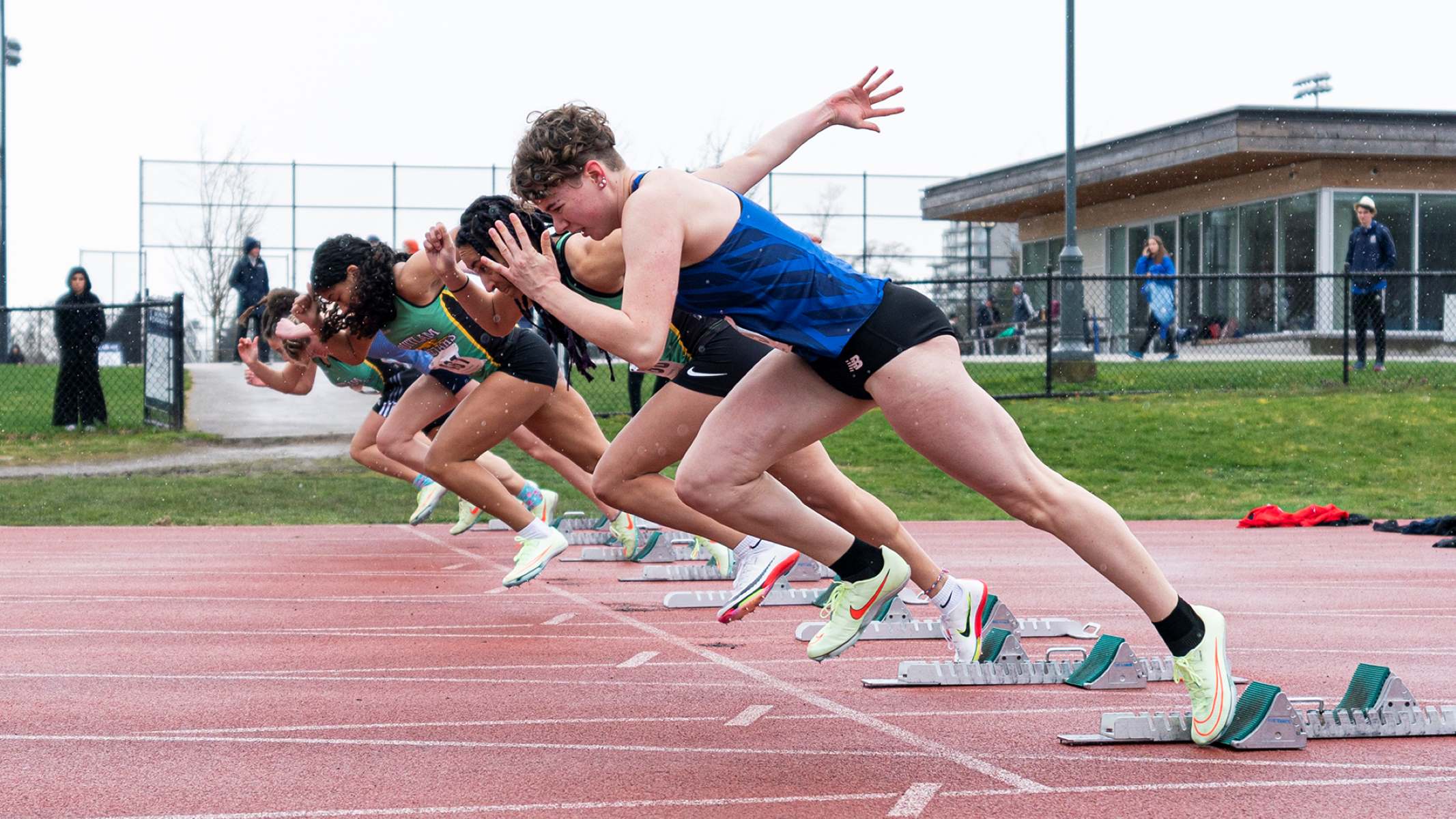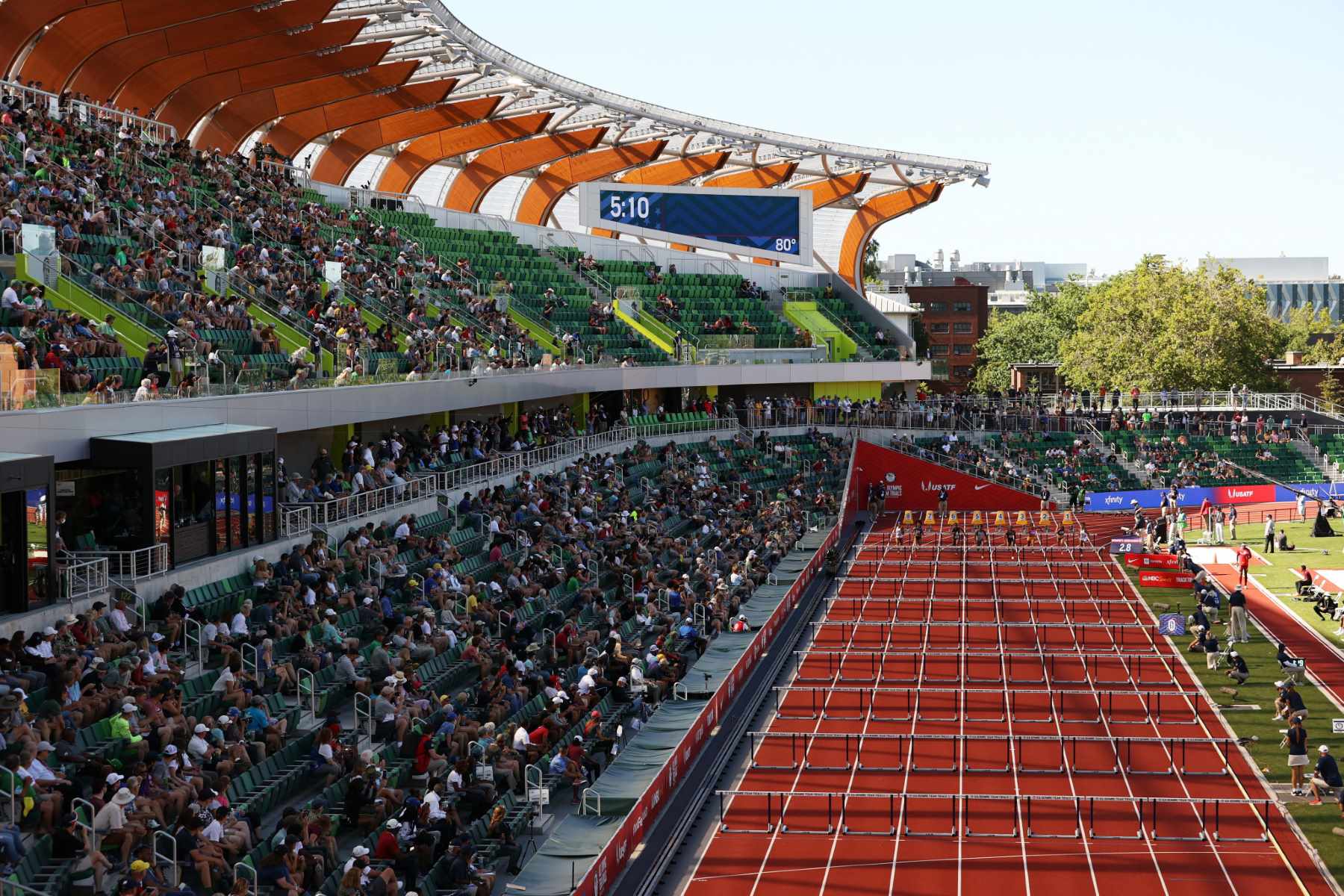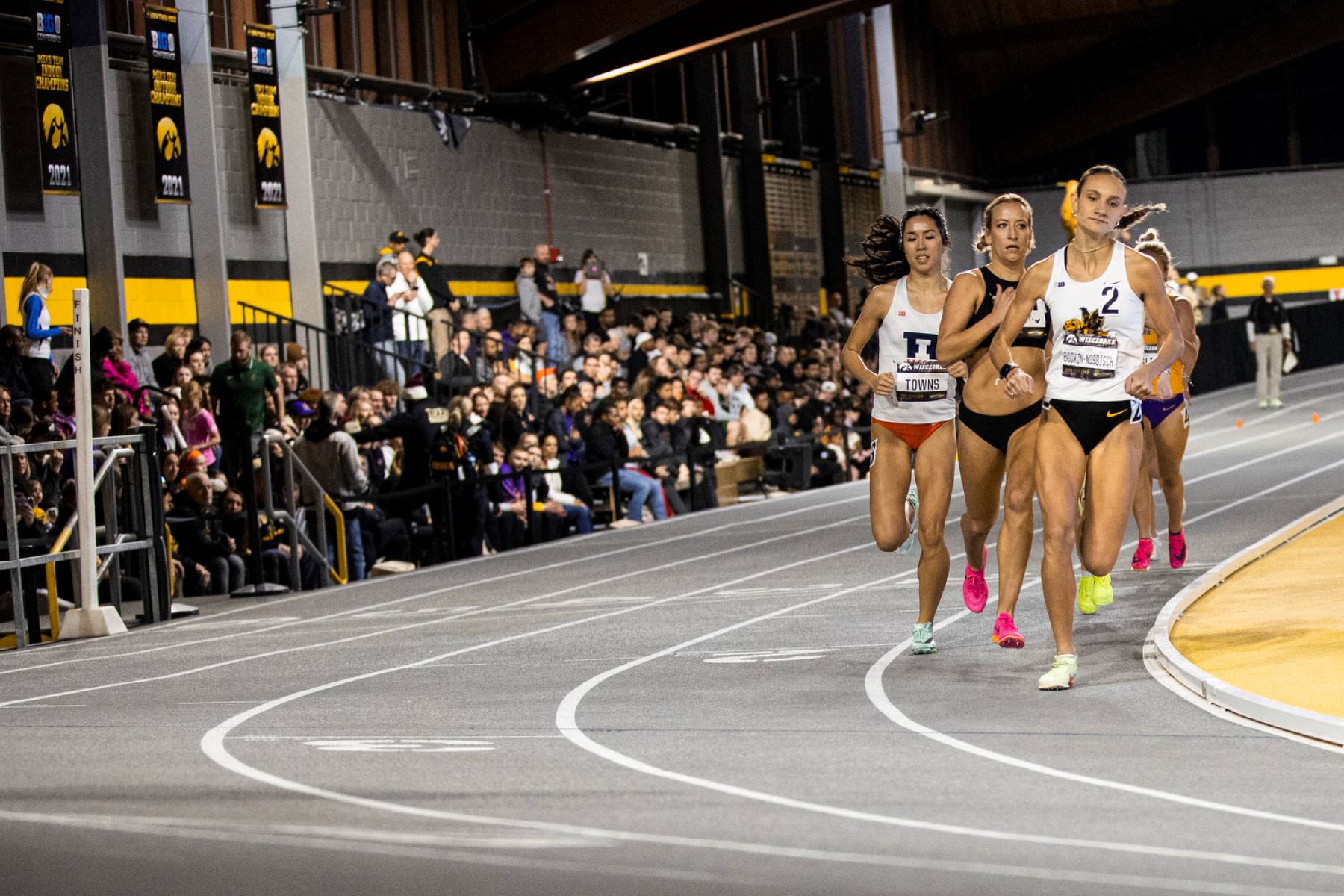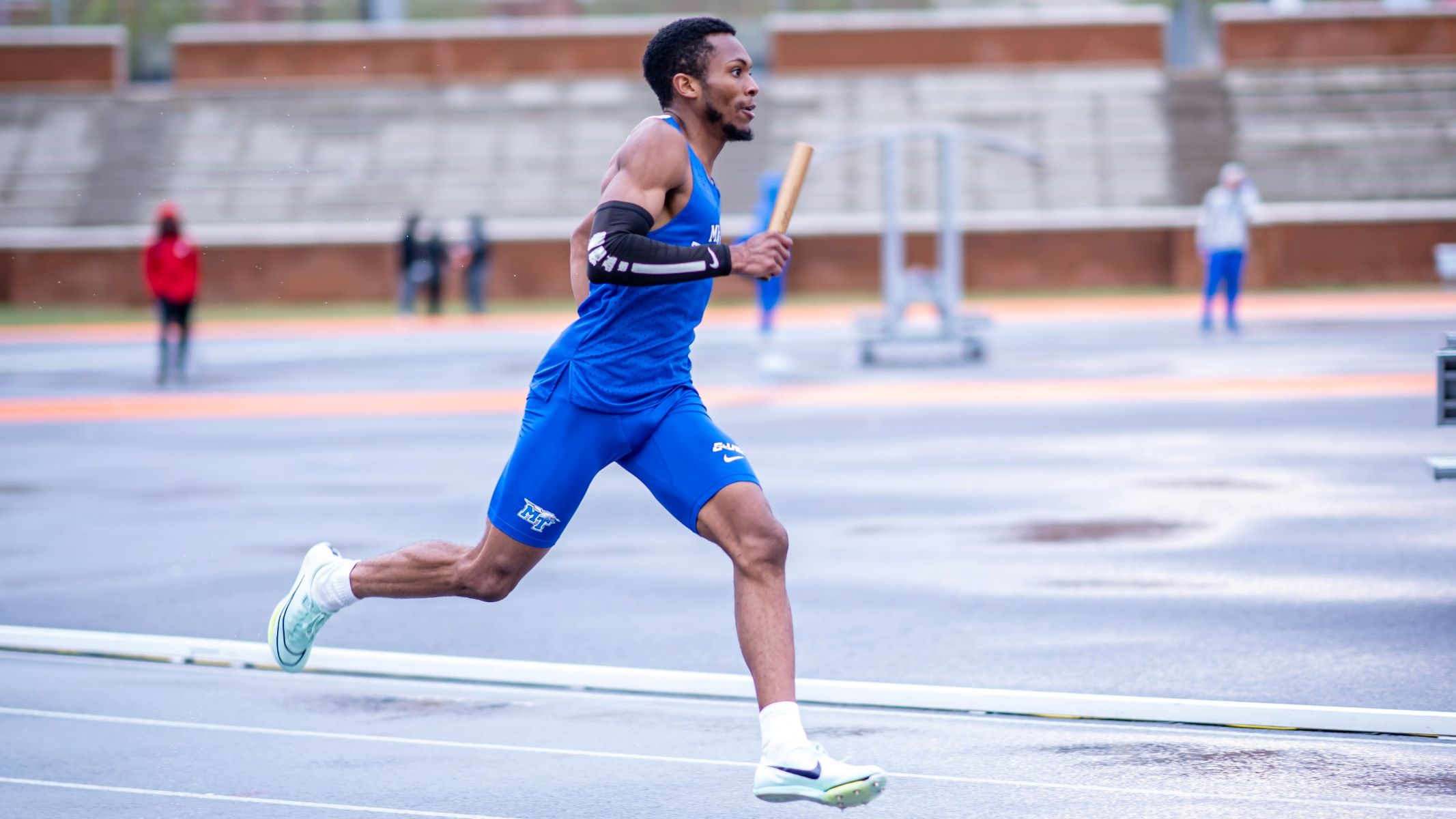

Featured
What Are The Events Of Track And Field
Modified: January 1, 2024
Discover the exciting events of track and field, from sprints to jumping and throwing. Stay informed with our featured articles on the latest news and athletes in the sport.
Introduction
Welcome to the exciting world of track and field! Track and field is a sport that encompasses a wide range of athletic events, including sprinting, middle distance, long distance, hurdle, relay, jumping, throwing, and combined events. These events showcase the incredible speed, endurance, agility, and strength of athletes from around the world.
Track and field has a rich history dating back to ancient times, with records of athletic competitions found as early as the ancient Olympic Games in ancient Greece. Today, track and field is a highly popular sport, with events taking place at local, national, and international levels, culminating in prestigious competitions such as the Olympic Games and World Championships.
The diverse range of events in track and field allows athletes to showcase their unique skills and abilities. From the explosive power of sprinters to the remarkable endurance of long-distance runners, each event requires its own set of techniques, strategies, and training methods.
Not only do track and field events captivate audiences with their thrilling displays of athleticism, but they also serve as a platform for athletes to push the boundaries of human performance and set new records. Whether it’s breaking the 100-meter sprint record or achieving incredible heights in high jump, track and field events constantly push the limits of what is possible.
Track and field events are not only physically demanding but also mentally challenging. Athletes must possess focus, determination, and resilience to overcome obstacles and excel in their respective events. It’s a sport that requires discipline, dedication, and hours of training to reach peak performance.
In this article, we will explore the various events that make up the world of track and field. We will dive into the intricacies of each event, the key skills required, and some of the notable athletes who have made their mark in these events. So, let’s lace up our shoes, step onto the track, and embark on this thrilling journey through the events of track and field!
Sprinting Events
Sprinting events are some of the most thrilling and fast-paced events in track and field. They require a combination of explosive power, speed, agility, and precision. Sprinting events are divided into various distances, including the 100 meters, 200 meters, and 400 meters.
The 100-meter sprint is a true test of raw speed and acceleration. Athletes explode out of the starting blocks and strive to cover the distance in the shortest possible time. Usain Bolt, widely regarded as one of the greatest sprinters of all time, holds the world record for the men’s 100-meter sprint with a blistering time of 9.58 seconds.
The 200-meter sprint is a slightly more tactical event, as athletes must maintain their speed around the curve before unleashing their final burst of energy on the straight. Florence Griffith-Joyner, known as “Flo-Jo,” set the women’s 200-meter world record in 1988 with a time of 21.34 seconds, a record that still stands today.
Moving up in distance, the 400-meter sprint requires a mix of speed and endurance. Athletes must maintain a strong pace throughout the entire lap, pushing their limits to the brink. Michael Johnson, a legendary American sprinter, set the men’s 400-meter world record in 1999 with an astonishing time of 43.18 seconds.
Sprinting events not only demand physical prowess but also impeccable technique. Athletes must master the art of the sprint start, proper running form, and efficient stride length to maximize their speed and minimize their time. Coaches work tirelessly with sprinters to improve their explosive power, quickness off the blocks, and overall running mechanics.
In addition to individual sprint events, relay races add an element of teamwork and strategy to the mix. In the 4×100-meter and 4×400-meter relays, teams of four athletes each take turns running a specified distance before handing off the baton to their teammate. These events require seamless baton exchanges, precise timing, and coordinated efforts to achieve success.
Over the years, sprinting events have captivated audiences with thrilling displays of speed and athleticism. From jaw-dropping finishes to photo-finishes that leave spectators on the edge of their seats, sprinting events are a true spectacle that showcases the pure determination and physical talents of athletes.
As we venture deeper into the world of track and field, let’s explore the middle distance events, which offer a unique balance between speed and endurance.
Middle Distance Events
Middle distance events in track and field combine elements of speed, endurance, and tactical racing. These events typically range from 800 meters to 1500 meters, requiring athletes to strike a balance between maintaining a fast pace and conserving energy for the final push.
The 800-meter run is a challenging event that demands a combination of speed, endurance, and strategic pacing. Athletes must find the right balance between starting strong and conserving energy for the second half of the race. David Rudisha of Kenya holds the men’s world record in the 800 meters, he set a blistering time of 1:40.91 in 2012.
Moving up in distance, the 1500-meter race requires not only a strong aerobic base but also the ability to change gears and execute a well-timed kick. Athletes must navigate tactical challenges, such as positioning themselves well in the pack and making decisive moves at the right moments. Hicham El Guerrouj, a Moroccan middle-distance runner, currently holds the men’s world record in the 1500 meters with a time of 3:26.00, set in 1998.
Middle distance events demand not only physical strength but also mental fortitude. Athletes must make split-second decisions, adapt to race conditions, and maintain focus amidst intense competition. They need to be aware of their competitors’ moves and be ready to respond with calculated tactics and strategic surges.
Training for middle distance events involves a mix of interval training, speed work, and endurance training. Athletes work on building their aerobic capacity and fine-tuning their speed to excel in these events. Coaches emphasize the importance of pacing strategies, developing a strong finishing kick, and mastering race tactics specific to the distance.
Middle distance events have provided memorable moments in track and field history. Whether it’s the exhilarating sprint to the finish line or a well-timed surge that leaves competitors in the dust, these events showcase the skill and determination of athletes who specialize in the middle distances.
As we delve further into the world of track and field, let’s explore the long-distance events, where athletes push their limits of endurance and stamina.
Long Distance Events
Long distance events in track and field test the limits of an athlete’s endurance, mental resilience, and strategic racing. These events typically include the 3000 meters, 5000 meters, and 10000 meters, with some races extending to the marathon distance of 42.195 kilometers.
The 3000-meter run is a fast-paced event that requires athletes to maintain a strong, steady pace throughout the race. It demands a combination of speed, stamina, and tactical awareness. Joshua Cheptegei of Uganda currently holds the men’s world record in the 3000 meters with a time of 7:20.67, set in 2020.
Moving up in distance, the 5000-meter race necessitates even greater endurance and mental fortitude. Athletes must effectively manage their energy expenditure and maintain a consistent pace while contending with possible surges from their competitors. Kenenisa Bekele of Ethiopia holds the world record in the men’s 5000 meters with a time of 12:37.35, set in 2004.
At the pinnacle of long distance events is the 10000-meter race, where athletes truly push their limits. They must possess both incredible aerobic capacity and the ability to strategically surge when necessary. Joshua Cheptegei also holds the men’s world record in the 10000 meters, with a time of 26:11.00, set in 2020.
Long distance runners undergo extensive training to build their endurance and pacing skills. They focus on developing a strong aerobic base, incorporating long runs and tempo workouts to improve their ability to sustain a steady pace over extended distances. Mental preparation, such as mental imagery and positive self-talk, is also crucial in overcoming the challenges faced during long distance races.
Long distance events have provided numerous moments of excitement and drama in the history of track and field. Whether it’s the thrilling final lap sprint or a display of unmatched stamina over multiple kilometers, these events showcase the remarkable physical and mental capabilities of long distance runners.
As we continue our exploration of track and field, let’s shift our attention to the hurdle events, which combine speed, agility, and precise technique.
Hurdle Events
Hurdle events in track and field add an exciting element of obstacles, requiring athletes to combine speed, agility, and precise technique. These events consist of sprinting over a predetermined distance while clearing a series of hurdles strategically placed along the track.
There are various hurdle distances, including the 110 meters hurdles for men and the 100 meters hurdles for women. In these events, athletes must navigate ten evenly spaced hurdles with a height of 1.067 meters (42 inches) for men and 0.84 meters (33 inches) for women.
Hurdles races demand a fine balance between sprinting speed and maintaining rhythm and technique over the hurdles. Athletes must time their strides and jumps carefully to clear each hurdle efficiently without disrupting their momentum. The fluidity and precision of their movements are crucial in minimizing the time it takes to complete the race.
One of the most remarkable hurdling performances in history was by Aries Merritt of the United States. In 2012, he set the men’s world record in the 110 meters hurdles with a time of 12.80 seconds. On the women’s side, Yulia Pechonkina of Russia established the world record in the 400 meters hurdles in 2003, completing the race in 52.34 seconds.
Training for hurdle events involves a combination of sprint training and specific technical drills. Athletes work on explosive starts, quick acceleration, and maintaining proper form and rhythm throughout the race. They focus on exercises that enhance hip mobility, leg strength, and flexibility to handle the demands of hurdling efficiently.
Competing in hurdle events requires mental tenacity and the ability to adapt to unforeseen circumstances. Athletes must remain focused and perform flawlessly, as even the slightest error can cause them to stumble and lose valuable time. Overcoming these challenges and maintaining composure under pressure separates the elite hurdlers from the rest.
Hurdle events have captivated audiences with their dramatic displays of speed, agility, and athleticism. Witnessing athletes soaring gracefully over hurdles, the anticipation of each jump and the explosive burst of speed between each obstacle is truly mesmerizing. Hurdling events add an element of excitement and technical skill to the world of track and field.
As we move forward, let’s explore the relay events, where teamwork and seamless baton exchanges are crucial for success.
Relay Events
Relay events in track and field showcase the importance of teamwork, coordination, and precise baton exchanges. These events involve a team of four athletes, each running a specified distance before handing off the baton to their teammate. Relay events bring an added level of excitement and strategy to the sport, with races including the 4×100 meters and 4×400 meters relays.
The 4×100 meters relay is a thrilling and fast-paced event that requires athletes to display explosive speed and swift baton exchanges. Teams must execute seamless handoffs within the exchange zone, a 20-meter area where runners can pass the baton. The slightest mishap or dropped baton can significantly impact the team’s chances of success.
The world record in the men’s 4×100 meters relay stands at 36.84 seconds, set by the Jamaican team in 2012. For the women’s 4×100 meters relay, the world record is 40.82 seconds, achieved by the United States in 2012 as well.
Similarly, the 4×400 meters relay is a longer and more strategic event that combines speed and endurance. Each team member runs a full lap on the track, and tactics such as pacing, strategic positioning, and effective baton exchanges play a significant role. The current men’s world record in the 4×400 meters relay is 2:54.29, set by the United States in 1993. For the women’s event, the record is 3:15.17, achieved by the Soviet Union in 1988.
Relay events require seamless teamwork, precise timing, and communication between teammates. Efficient baton exchanges are critical for maintaining momentum and ensuring a smooth transition between runners. Teams often practice extensively to perfect their handoffs, utilizing various techniques such as the “push pass” or the “blind pass” to achieve the fastest and most secure exchange.
Relay races not only test the physical abilities of athletes but also their mental fortitude under pressure. The exhilaration of running for a team and the responsibility of delivering a successful baton exchange add an extra layer of excitement and challenge. Athletes must remain composed, focused, and synchronized with their teammates to achieve optimum performance.
Relay events in track and field provide spectators with incredible displays of speed, precision, and teamwork. The crowd erupts with anticipation as runners speed down the track, handoff after handoff, in a quest for victory. These events embody the essence of collaboration and showcase the abilities of athletes working together towards a common goal.
Now, let’s explore the jumping events, where athletes soar to new heights and distances.
Jumping Events
Jumping events in track and field showcase the remarkable athleticism, power, and precision of athletes as they soar through the air and achieve impressive heights or distances. These events encompass various disciplines, including the long jump, high jump, triple jump, and pole vault.
The long jump is a thrilling event that tests athletes’ abilities to generate speed, explosive power, and exceptional technique. Competitors sprint down the runway before launching themselves into the air, aiming to achieve the longest distance possible. The world record in the men’s long jump is held by Mike Powell, who leaped an incredible 8.95 meters in 1991. On the women’s side, the record stands at 7.52 meters and was set by Galina Chistyakova in 1988.
In the high jump, athletes aim to clear a bar set at progressively higher heights without knocking it down. They utilize a distinctive technique known as the Fosbury Flop, where the jumper curves their back as they clear the bar. Javier Sotomayor of Cuba holds the world record in the men’s high jump, reaching a height of 2.45 meters in 1993. The women’s record of 2.09 meters is held by Stefka Kostadinova, set in 1987.
The triple jump combines speed, power, and precise technique as athletes execute a hop, a step, and a jump to cover the longest distance possible. Competitors must maintain rhythm and balance throughout each phase of the jump. The men’s world record in the triple jump is held by Jonathan Edwards, who leaped 18.29 meters in 1995. The women’s record stands at 15.50 meters and was set by Inessa Kravets in 1995.
The pole vault is a thrilling event that demands exceptional strength, speed, and technique. Athletes use a flexible pole to launch themselves over a bar set at progressively higher heights. Sergey Bubka of Ukraine holds the men’s world record in the pole vault, clearing an astonishing height of 6.14 meters in 1994. For women, the record stands at 5.06 meters and was achieved by Yelena Isinbayeva in 2009.
Jumping events require a combination of natural talent, technical skill, and countless hours of practice. Athletes work on developing explosive power, fine-tuning their takeoff, and perfecting their landing techniques. They also possess incredible body control and spatial awareness to execute precise movements during each jump.
Jumping events provide incredible moments of suspense and awe as athletes defy gravity and achieve remarkable feats. The intensity builds as competitors approach each attempt, with spectators holding their breath as they witness athletes push the boundaries of human capability.
Now that we’ve explored the jumping events, let’s move on to the throwing events, where strength and precision play a vital role.
Throwing Events
Throwing events in track and field exemplify the combination of raw strength, technique, and precision required to propel objects to impressive distances. These events include the shot put, discus throw, javelin throw, and hammer throw.
The shot put is a highly explosive event that involves athletes launching a heavy metal ball, known as the shot, as far as possible. Competitors must generate maximum power and leverage through the use of their legs, hips, and upper body. The men’s world record in the shot put is held by Randy Barnes, who threw an incredible distance of 23.12 meters in 1990. Women’s shot put record stands at 22.63 meters, set by Natalya Lisovskaya in 1987.
The discus throw requires a combination of strength, proper technique, and coordination. Athletes spin rapidly within a confined circle before releasing the discus with a flick of their wrist. The men’s world record in the discus throw is held by Jürgen Schult, who achieved an astonishing distance of 74.08 meters in 1986. The women’s record stands at 76.80 meters and was set by Gabriele Reinsch in 1988.
The javelin throw demands a unique blend of speed, strength, and technique. Competitors run down the runway, building momentum before releasing the javelin in a powerful overhead throw. The men’s world record in the javelin throw is held by Jan Železný, who threw an incredible distance of 98.48 meters in 1996. For women, the record stands at 72.28 meters, set by Barbora Špotáková in 2008.
Lastly, the hammer throw relies on exceptional strength and rotational technique as athletes twirl a heavy metal ball (the hammer) on a wire before releasing it. The men’s world record in the hammer throw is held by Yuriy Sedykh, who achieved a remarkable distance of 86.74 meters in 1986. The women’s record stands at 82.98 meters and was set by Anita Włodarczyk in 2016.
Throwing events require athletes to have incredible strength, explosive power, and precise technique. They spend years honing their skills, focusing on building strength in their arms, shoulders, and core muscles. Proper form and technique, from the footwork to the release of the implement, are crucial in achieving maximum distance.
Throwing events offer moments of awe as athletes propel objects through the air with incredible force and precision. The ability to harness and convert power into distance is a testament to the dedication and hard work put in by these athletes. Spectators cheer as they witness the sheer strength and technique on display.
Now that we’ve explored the throwing events, let’s move on to the combined events, where athletes demonstrate their versatility in multiple disciplines.
Combined Events
Combined events in track and field, also known as multi-events, showcase the versatility and athleticism of athletes as they compete across multiple disciplines. These events require a combination of speed, strength, agility, and endurance, and include the decathlon for men and the heptathlon for women.
The decathlon consists of ten events spread over two days: the 100 meters, long jump, shot put, high jump, 400 meters, 110 meters hurdles, discus throw, pole vault, javelin throw, and finally, the 1500 meters. Athletes earn points based on their performance in each event, with the overall winner being the athlete with the highest cumulative score. Some of the greatest decathletes in history include Ashton Eaton, Daley Thompson, and Usain Bolt, who set the decathlon world record for the fastest 100 meters time during his participation in 2012.
The heptathlon, on the other hand, is composed of seven events also contested over two days: the 100 meters hurdles, high jump, shot put, 200 meters, long jump, javelin throw, and 800 meters. Similar to the decathlon, athletes accumulate points based on their performance, and the athlete with the highest total score emerges as the winner. Excellent heptathletes such as Jackie Joyner-Kersee, Carolina Klüft, and Jessica Ennis-Hill have left an indelible mark on the world of sports through their stellar performances.
Both the decathlon and heptathlon demand exceptional versatility as athletes must excel across various disciplines. They require athletes to be competent in both speed and power events, with the ability to adapt their training and tactics accordingly. Competing in these events necessitates not only physical prowess but also mental fortitude and strategic planning.
Training for combined events is a complex and meticulous process. Athletes must focus on developing all-round fitness, including strength, speed, endurance, and technique, to perform well in each of the disciplines. They work closely with coaches to create training plans that optimize their performance across the board, aiming for consistency and improvement in every event.
Combined events provide a unique spectacle as athletes showcase their versatility and ability to excel in a wide range of disciplines. Each event is a test of physical and mental resilience, with athletes pushing themselves to the limits in pursuit of the ultimate prize. The decathlon and heptathlon are true tests of the all-around athlete, offering an exciting and dynamic blend of athleticism.
As we reach the end of our journey through the events of track and field, we can’t help but marvel at the incredible talent, dedication, and sheer athleticism displayed by the athletes who compete in these diverse disciplines.
Conclusion
Track and field is a captivating sport that encompasses a wide range of events, each showcasing the remarkable athleticism and dedication of its participants. From the lightning-fast sprinters to the powerful throwers, the graceful jumpers to the strategic middle-distance runners, and the versatile athletes who excel in the combined events, track and field offers something for everyone.
This article has explored the various events that make up the world of track and field, providing a glimpse into the incredible feats achieved by athletes. Sprinting events captivate us with their explosive speed, while middle-distance and long-distance events test the limits of endurance. Hurdle events mesmerize us with their dynamic displays of agility, while the jumping events leave us in awe as athletes reach new heights or distances. Throwing events showcase immense strength and precision, while the combined events demonstrate the versatility of athletes competing across multiple disciplines.
Behind every impressive performance in track and field lies years of dedicated training, sacrifice, and unwavering determination. Athletes push themselves to their limits, constantly striving for improvement and seeking to surpass previous records and achievements. They inspire us with their resilience, sportsmanship, and commitment to excellence.
Track and field events have a rich history and continue to captivate audiences worldwide. From iconic moments in the Olympic Games to prestigious world championships, these events bring together athletes from diverse backgrounds and cultures, uniting them in their pursuit of greatness.
Whether you’re a fan, a participant, or simply curious about the sport, track and field offers an exciting and inspiring journey through the triumphs and challenges of the human athletic endeavor. So, lace up your shoes, feel the adrenaline, and join in the celebration of the incredible events that make up the world of track and field!
